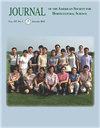金缕菊的遗传多样性和种群结构
IF 1.1
4区 农林科学
Q3 HORTICULTURE
Journal of the American Society for Horticultural Science
Pub Date : 2022-01-01
DOI:10.21273/jashs05095-21
引用次数: 1
摘要
蜡梅属,被称为流苏属,是橄榄科(木犀科)的一员。弗吉尼亚蜡梅是一种分布在美国东部森林中的林下树木或灌木,是一种观赏树,在野外没有昆虫和疾病。该物种能够耐受各种环境条件,人们有兴趣开发具有改良园艺特性的新品种,如广泛适应的树形或直立生长习惯和优异的开花表现。为了确定弗吉尼亚C.virginicus本地区的基因库以用于育种计划,使用26个简单序列重复序列(SSR)评估了来自四个州(佛罗里达州、马里兰州、北卡罗来纳州和得克萨斯州)12个地点的274个个体的遗传多样性和种群结构。平均检测到12.54个等位基因/位点,等位基因丰富度平均为2.80。遗传分化为0.11,表明亚群之间存在中度分化。尽管遗传多样性高,种群分化低,但贝叶斯聚类分析确定了六个与采集点地理分布相匹配的遗传群。分子变异分析表明,大多数(82%)变异是由个体内部解释的,11%和7%的变异是由于个体内部和群体之间的差异造成的。对所有样本的距离隔离分析表明,地理距离和遗传距离之间存在微弱的正相关关系。本研究中分析的弗吉尼亚C.virginicus样本表明,种质资源收集具有足够的多样性,可用于育种计划。考虑到相对温和的遗传分化,在为育种计划收集亲本材料时,不太可能遗漏独特的遗传多样性岛屿本文章由计算机程序翻译,如有差异,请以英文原文为准。
Genetic Diversity and Population Structure of Chionanthus virginicus
The genus Chionanthus, known as fringetrees, is a member of the olive family (Oleaceae). Chionanthus virginicus is an understory tree or shrub with a wide range in forests of the eastern United States and is used as an ornamental tree that is known to be free of insects and disease in the wild. The species is tolerant of a wide range of environmental conditions, and there is interest in developing new cultivars with improved horticultural traits, such as tree form or upright growth habit and superior flowering display that are widely adapted. To identify genepools in the native range of C. virginicus for use in breeding programs, the genetic diversity and population structure were assessed for 274 individuals from 12 locations in four states (Florida, Maryland, North Carolina, and Texas) using 26 simple sequence repeats (SSRs). An average of 12.54 alleles/locus were detected, allelic richness averaged 2.80. Genetic differentiation was 0.11, indicating moderate differentiation among subpopulations. Despite the high genetic diversity and low population differentiation, Bayesian clustering analysis identified six genetic groups that match the geographic distribution of collection sites. Analysis of molecular variance indicated that most (82%) of the variation is explained within individuals, and 11% and 7% of the variation is due to differences among individuals within populations and among populations. Analysis of isolation by distance across all samples showed a weak positive relationship between geographic distance and genetic distance. The C. virginicus samples analyzed in this study indicate there is sufficient diversity for germplasm collection for use in breeding programs. Given the relatively moderate genetic differentiation, there are not likely to be unique islands of genetic diversity that may be missed when gathering parental materials for a breeding program
求助全文
通过发布文献求助,成功后即可免费获取论文全文。
去求助
来源期刊
CiteScore
3.80
自引率
0.00%
发文量
31
审稿时长
2 months
期刊介绍:
The Journal of the American Society for Horticultural Science publishes papers on the results of original research on horticultural plants and their products or directly related research areas. Its prime function is to communicate mission-oriented, fundamental research to other researchers.
The journal includes detailed reports of original research results on various aspects of horticultural science and directly related subjects such as:
- Biotechnology
- Developmental Physiology
- Environmental Stress Physiology
- Genetics and Breeding
- Photosynthesis, Sources-Sink Physiology
- Postharvest Biology
- Seed Physiology
- Postharvest Biology
- Seed Physiology
- Soil-Plant-Water Relationships
- Statistics

 求助内容:
求助内容: 应助结果提醒方式:
应助结果提醒方式:


